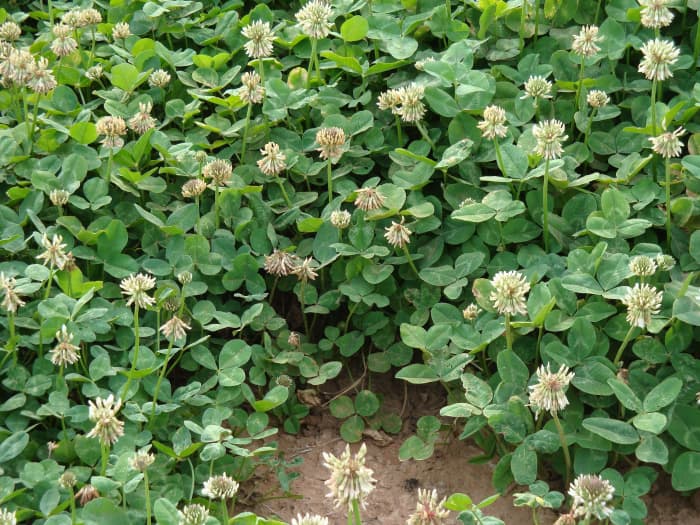Increased Longevity:
Renovation was bred for increased stolon density utilizing a combination of long-living Southern Plain ecotypes and disease resistant ladino types. The result is increased persistence, even under grazing. Increased stolon density also makes it ideal for erosion control and long term conservation.
Wider Leaves:
Renovation has wider leaves, closer to ladino-type clovers. This means more forage and less weed pressure, even under grazing.
Pasture Improvement:
Renovation is an excellent choice to improve and maintain healthy productive pastures. Renovation is ideal for all livestock.
Wildlife Attractant:
Renovation is an ideal legume for wildlife food plots, as a three-fold contributor: providing a high-protein food source, acting as a seasonal attractant, and contributing nitrogen to surrounding plants.
Fescue Toxicosis Mitigation:
When planted into toxic endophyte pastures, Renovation can help lessen the effects of endophyte toxicity and contribute to overall herd health.
Forage:
Renovation is an excellent choice to improve and maintain healthy productive pastures. For optimal animal performance a good pasture should maintain 20% or more of legumes by dry matter measurements. Renovation makes this goal achievable! In 2009, Renovation was planted into a deteriorating tall fescue stand and compared to a nitrogen-only fertilized control plot. Not only did Renovation maintain clover coverage above 25%, it also provided an additional 0.40 lbs. ADG over the fertilized control.
Renovation is an ideal companion legume for orchardgrass, perennial ryegrass, tall fescue, and other cool season grass, promising years of productivity. Renovation can also be planted into warm-season pastures, where it may act either as a short-lived perennial or a self-seeding annual, based on location and weather.
